German Shepherds are known for their intelligence, loyalty, and protective nature, making them a popular choice for families with young children. With the right training and guidance they can become gentle, reliable family members.
However, training German Shepherds for a family environment requires specific techniques and considerations to ensure a safe, enjoyable bond for both the dog and the children.
Below is a comprehensive guide on how to train German Shepherds to thrive in a family setting.
- Understanding the German Shepherd’s Temperament
- Start Training Early
- Socialization with Children and Adults
- Teaching Boundaries and Respectful Interaction
- Basic Obedience Commands for Safety
- Encouraging Calm Play and Managing Energy
- Handling Protective Instincts
- Building Positive Relationships with Young Children
- Seeking Professional Help When Necessary
- Consistency and Patience
RELATED
- Is German Shepherd Right for Apartment Living?
- Regular or Retractable Leash! Best for German Shepherds?
- Effective Methods for Crate Training German Shepherd Puppy
- Monthly & Annual Expenses of Owning a German Shepherd
- What are Challenges of Training & Raising German Shepherd?
- How to Raise a German Shepherd at Home
- Common German Shepherd Health Myths Debunked
- Common Mistakes to Avoid When Grooming a German Shepherd
- How to Tell if German Shepherd Feels Comfortable Around You
|| DON’T MISS! Today’s Deals on Chewy – Pet Foods, Products, Supplies, Toys and more…
01. Understanding the German Shepherd’s Temperament
German Shepherds are confident, courageous, and intelligent. They are naturally protective, a trait that can work well in family settings, particularly with small children.
However, without proper training, this protective nature can lead to over-guarding or possessiveness, especially around young family members. Knowing their temperament helps in developing training strategies that promote balanced behavior in a family environment.
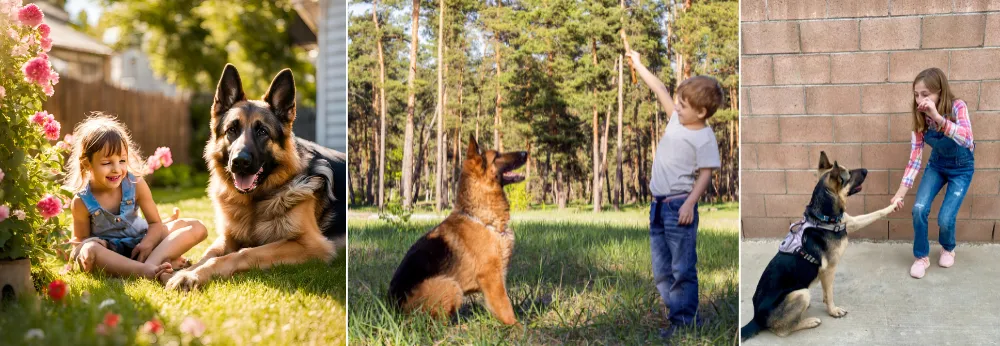
02. Start Training Early
Early training is crucial to harnessing a German Shepherd’s energy and curiosity, especially when young children are involved. Starting with obedience training during puppyhood not only builds a strong foundation but also establishes you as the dog’s leader.
Commands like “sit”, “stay”, and “leave it” should be taught early, as they are vital for managing the dog’s interactions with young children.

Tips for Early Training:
- Use treats, praise, and play to reward desirable behaviors.
- Set up a routine and stick to it. Consistency will help the puppy understand what is expected.
- Keep training sessions brief but frequent to match the dog’s short attention span in the early stages.
Related: Find the Treats that Your Dog Loves to Eat.
03. Socialization with Children and Adults
German Shepherds can become highly protective of their family, which can sometimes manifest as territorial behavior.
Socializing your dog from a young age is essential to help them become comfortable around different people, including children. Exposing the puppy to various environments, noises, and social situations will reduce any tendencies toward anxiety or aggression.
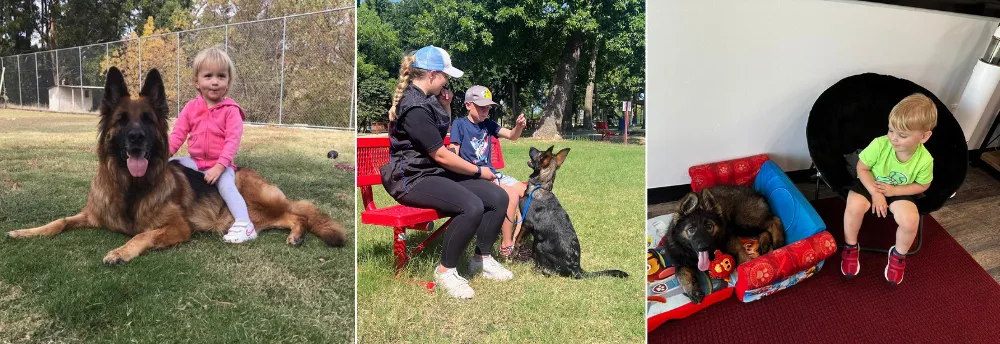
Strategies for Effective Socialization:
- Allow the dog to observe and interact with young children under close supervision.
- Reward the dog whenever it stays calm and gentle around children.
- Arrange playdates with other dogs, especially those that are used to children, to teach them appropriate responses.
04. Teaching Boundaries and Respectful Interaction
Young children may not always understand a dog’s boundaries, and German Shepherds, in turn, may not understand a child’s quick or unpredictable movements. Teach the German Shepherd to respect children’s space and boundaries, and likewise, educate the children on how to interact appropriately with the dog.
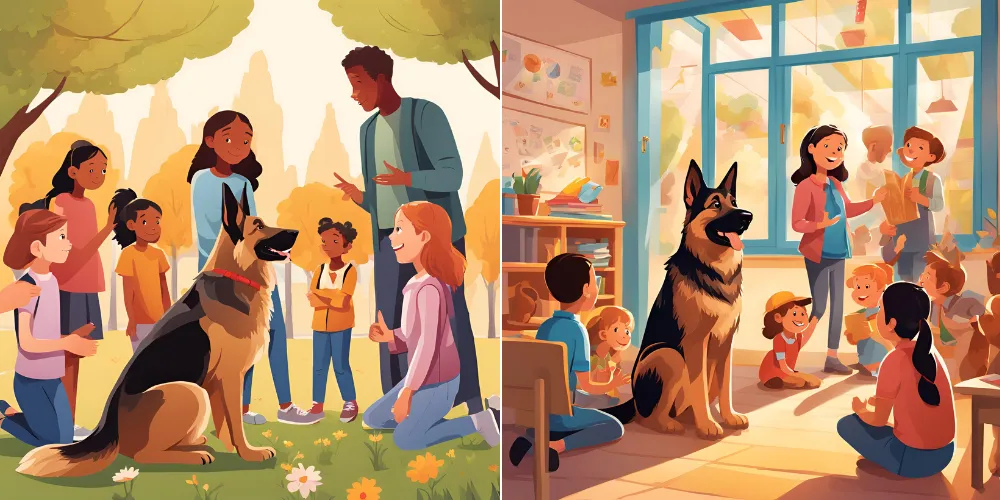
Important Techniques:
- Train the dog to go to a designated spot using the “Go to Place” command. This is helpful when they need a break from children’s playtime.
- German Shepherds often use their mouths to explore and play. Teaching “No Bite” or “Gentle” is critical, especially with small children.
- Never leave a young child and dog alone unsupervised, particularly in the early stages of training.
05. Basic Obedience Commands for Safety
Teaching German Shepherds basic obedience commands help prevent accidents and keeps both the dog and the children safe. German Shepherds can learn quickly, but commands must be taught clearly and reinforced regularly.
Essential Commands:
- Use “Sit” and “Down” commands to prevent jumping up or excited behaviors that could accidentally knock over a child.
- Use “Stay” command to help the dog remain in place, avoiding incidents during high-energy play.
- The “Come” command is crucial for recall, especially if the dog is playing off-leash near children.
Reinforcing these commands with consistency and patience will help build a foundation of trust and control.
06. Encouraging Calm Play and Managing Energy
German Shepherds are high-energy dogs that need a constructive outlet for their energy. Without enough mental and physical exercise, they may become restless or excitable, which can be challenging around children.
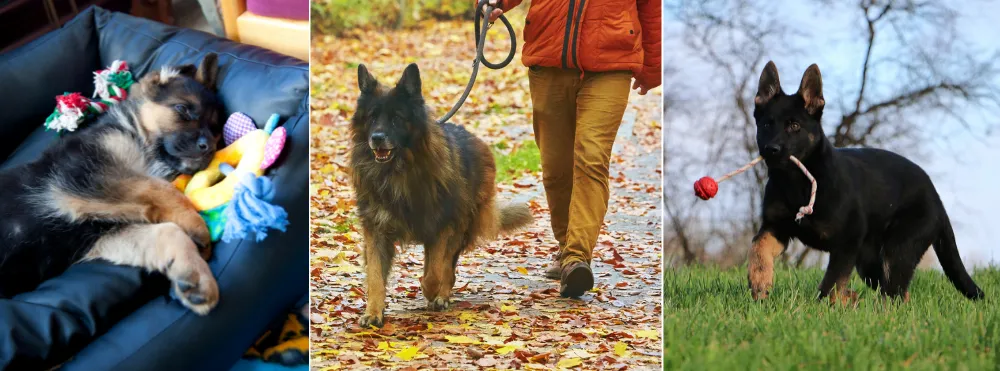
Tips for Energy Management:
- Provide structured walks, games like fetch, and activities that tire the dog without overwhelming them.
- German Shepherds thrive on mentally challenging activities. Use puzzle toys, obedience games, and training sessions to keep their minds occupied.
- Allow the dog to play with the children under supervision, keeping the interactions controlled to prevent accidents.
RELATED
- Best Way to Take German Shepherd for Walk: A Complete Guide
- German Shepherd Energy Levels by Age | Activity Needs
- Understanding the Prey Drive of German Shepherds
- Ultimate Guide to German Shepherds Water Activities
- How to Give German Shepherd a Bath: A Complete Guide
07. Handling Protective Instincts
German Shepherds are naturally protective, and it’s common for them to become watchful over their family members. While this trait can be beneficial, it needs to be managed to prevent over-guarding or aggression, especially around guests or other children.
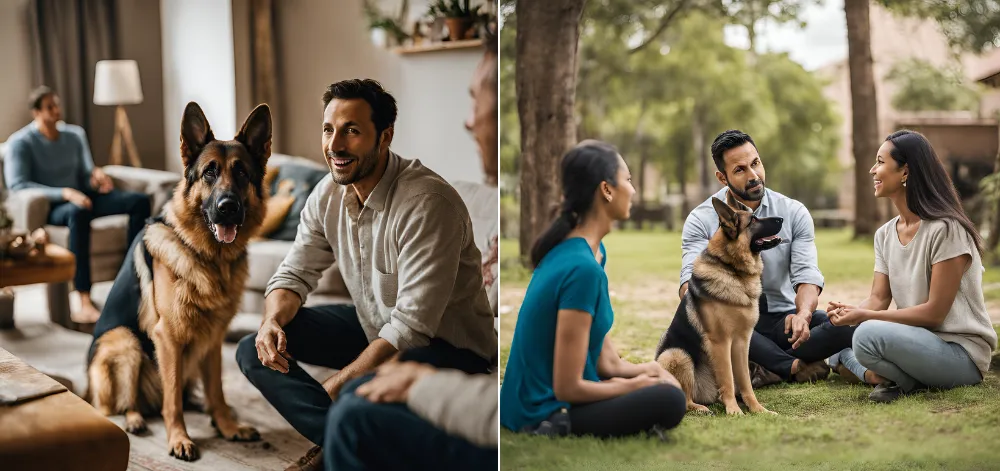
Managing Protective Behaviors:
- Teach “Leave It” command, which is useful when you want the dog to disengage from protective or possessive behavior.
- Do not reward barking or aggressive posturing around guests. Instead, teach calm greetings.
- Allow the dog to see you are comfortable with new visitors to ease their protective instincts.
08. Building Positive Relationships with Young Children
In addition to teaching the dog, it’s essential to educate children on how to treat and respect the German Shepherd. Children should understand that dogs need their space, especially during meals, rest, and when they’re playing independently.
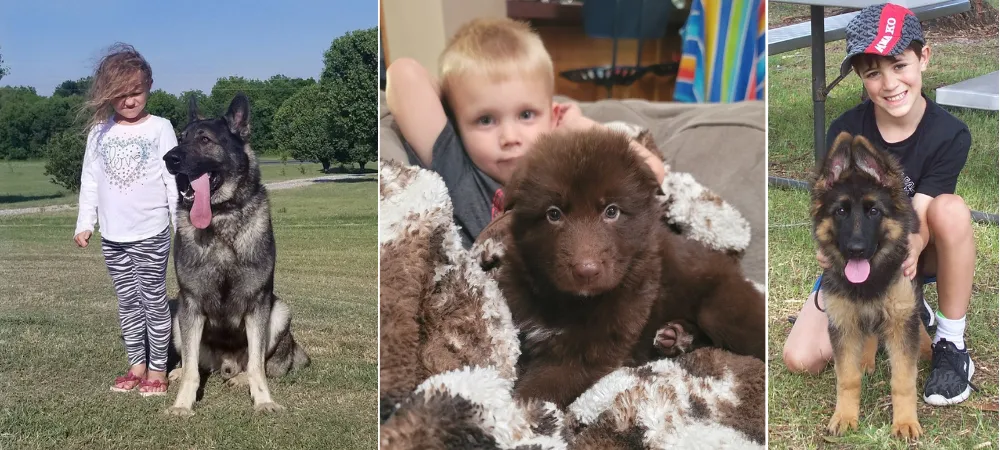
Key Lessons for Children:
- Show them how to pet the dog softly and avoid pulling on ears, tail, or fur.
- The dog needs quiet time during meals and rest. So, do not disturb.
- Use activities like simple obedience training or fetch games to build a bond between the child and the dog.
09. Seeking Professional Help When Necessary
If you notice any troubling behaviors or if the training process feels overwhelming, consult a professional dog trainer or behaviorist. Early intervention can prevent potential issues, particularly when it comes to aggression, fearfulness, or over-protectiveness.
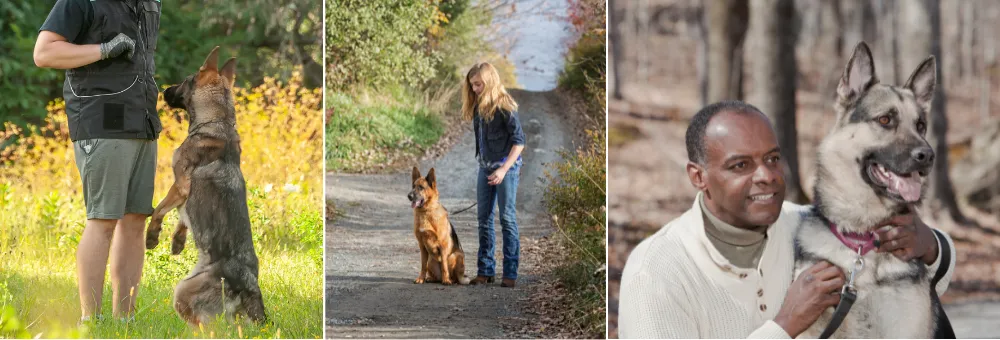
10. Consistency and Patience
Training a German Shepherd to fit seamlessly into a family environment with young children is a process that requires time, consistency, and patience. German Shepherds respond well to clear expectations and positive reinforcement, and with a structured approach, they can become loyal and loving family companions.
Conclusion
Training a German Shepherd to be a family-friendly companion in a home with young children is achievable with the right approach. By focusing on early training, socialization, consistent boundaries, and mutual respect, families can create a safe and harmonious relationship between their children and German Shepherd. The rewards of this training journey are immense, as German Shepherds offer not only their loyalty and companionship but also a deep bond with every member of the family.
If you like this post then don’t forget to share with other people. Share your feedback in the comments section below.
Also Read
- What is the Average Intelligence of German Shepherds?
- How to Determine Most Desirable Traits in German Shepherd?
- Male or Female German Shepherd: Which One is Better?
- Role of German Shepherds in Therapy & Emotional Support
- How to Extend the Lifespan of German Shepherd

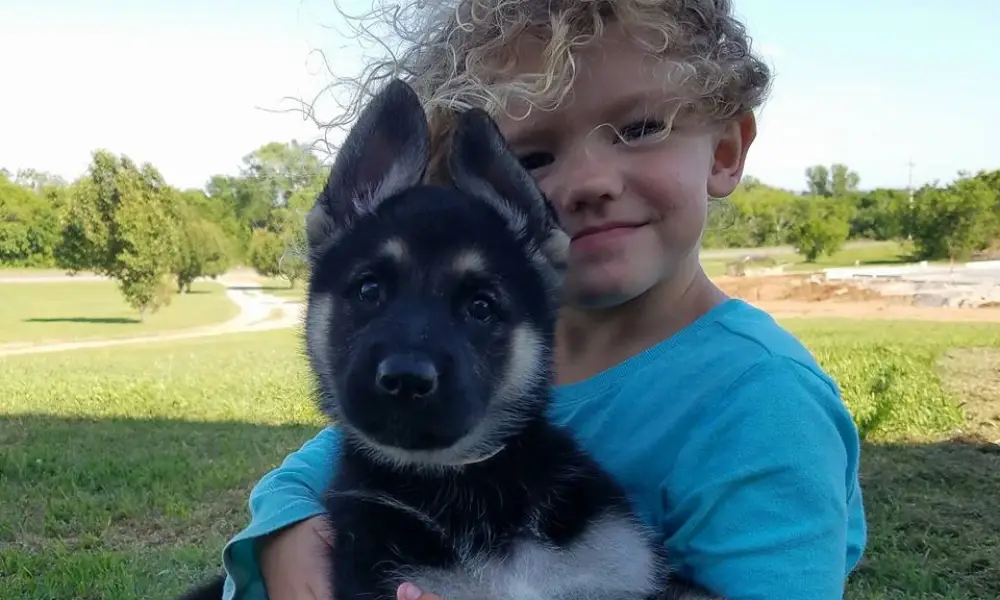


Leave a Reply